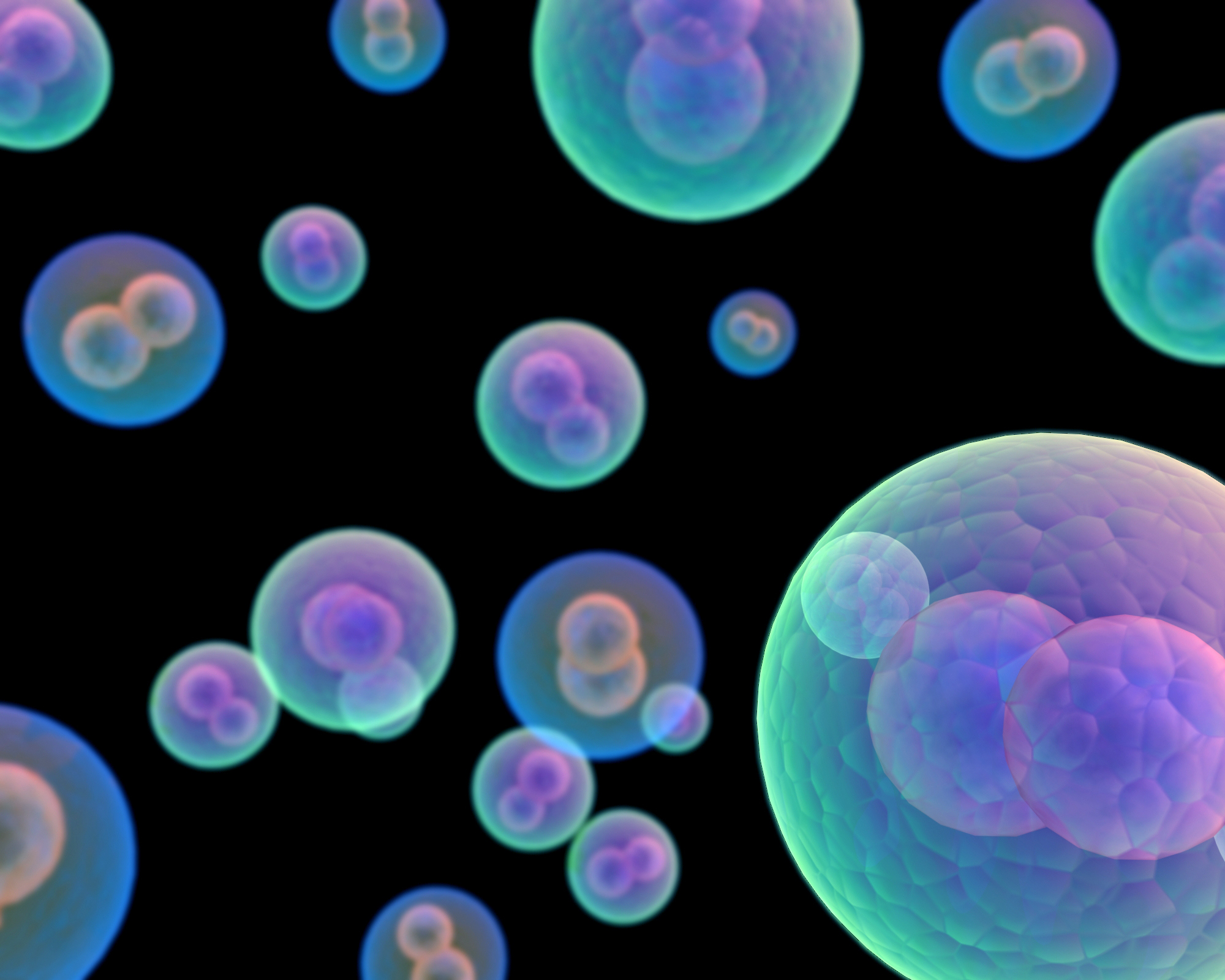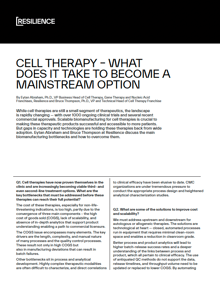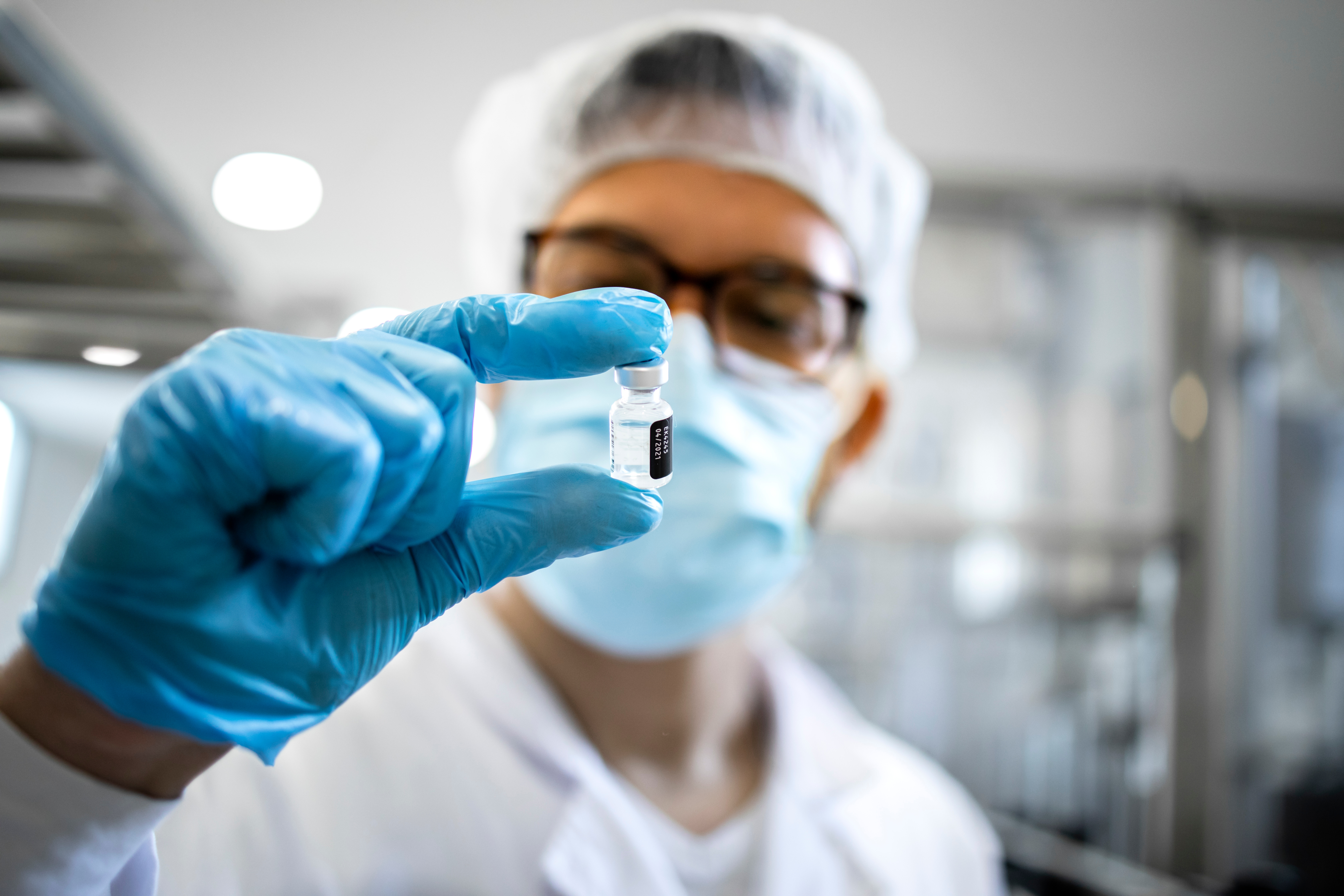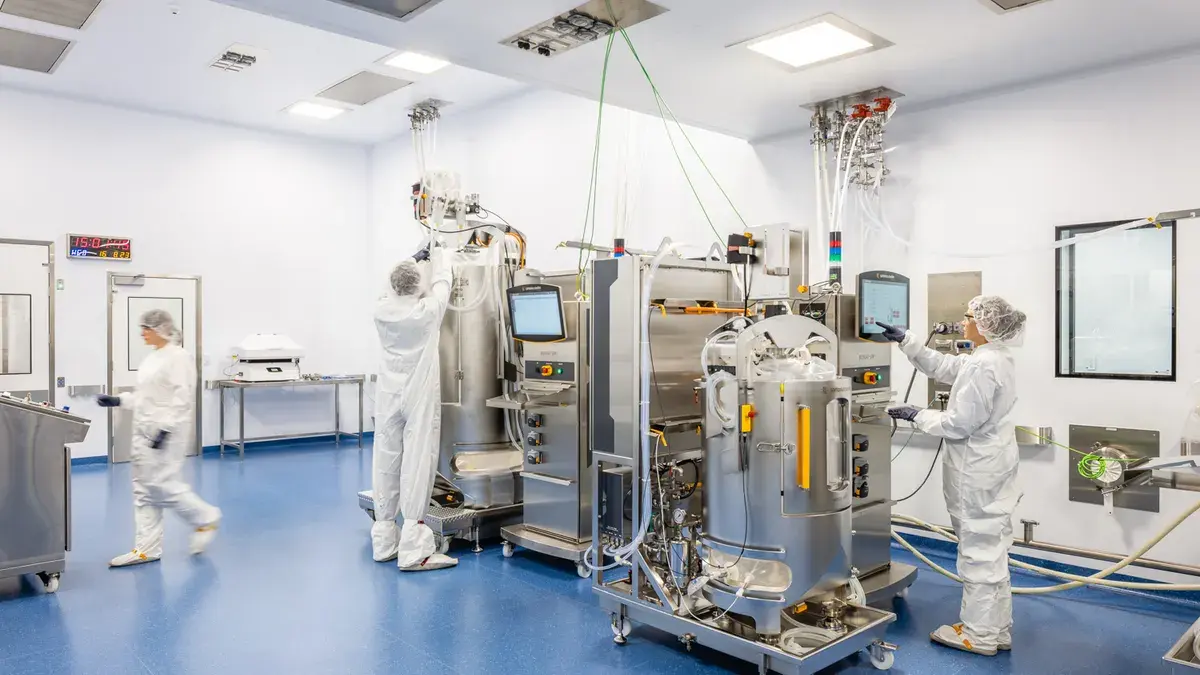
Cell Therapy – What Does It Take To Become a Mainstream Option
While cell therapies are still a small segment of therapeutics, the landscape is rapidly changing — with over 1,000 ongoing clinical trials and several recent commercial approvals. Scalable biomanufacturing for cell therapies is crucial to making these therapeutic products successful and accessible to more patients. But gaps in capacity and technologies are holding these therapies back from wide adoption. Eytan Abraham at Resilience discuss the main biomanufacturing bottlenecks and how to overcome them.
Cell therapies have now proven themselves in the clinic and are increasingly becoming viable third- and even second-line treatment options. What are the key bottlenecks that must be addressed before these therapies can reach their full potential?
The cost of these therapies, especially for non-life-threatening indications, is too high, partly due to the convergence of three main components – the high cost of goods sold (COGS), lack of scalability, and absence of in-depth analytics that support product understanding enabling a path to commercial licensure.
The COGS issue encompasses many elements. The key drivers are the length, complexity, and manual nature of many processes and the quality control processes. These result not only in high COGS but also in manufacturing deviations that can result in batch failures.
Other bottlenecks sit in process and analytical development. Highly complex therapeutic modalities are often difficult to characterize, and direct correlations to clinical efficacy have been elusive to date. CMC organizations are under tremendous pressure to conduct the appropriate process design and heightened analytical characterization studies.
What are some of the solutions to improve cost and scalability?
We must address upstream and downstream for autologous or allogeneic therapies. The solutions are technological at heart — closed, automated processes run in equipment that requires minimal cleanroom space and enables a reduction in cleanroom grade.
Better process and product analytics will lead to higher batch-release success rates and a deeper understanding of the links between process and product, which all pertain to clinical efficacy. The use of antiquated QC methods do not support the data, release timelines, and throughput volume need to be updated or replaced to lower COGS. By automating QC methods and shifting to more rapid and less labor-intensive processes, we can enable a reduction in COGS and enhanced scalability.
Additionally, there is not always a strong understanding of the linkage between the cell therapy manufacturing process and biology. A better understanding of the therapy mode of action, the cell starting material, and the real-time process parameters are also critical for success.
As the field identifies more correlates of safety and efficacy from clinical studies, we must be poised to implement the appropriate engineering solutions in the CMC and manufacturing arenas to continue to drive efficiencies that impact COGS and product release cycles.
What technologies are needed to scale and reduce the cost of cell therapy?
Both allogeneic and autologous cell therapies have significant technological challenges in manufacturing and quality, which can facilitate a true and considerable reduction of COGS.
There is a lack of large-scale fit-for-purpose downstream solutions for allogeneic therapies and a lack of closed, automated, and space-efficient manufacturing platforms for autologous therapies. While exciting new approaches to universal starting materials are emerging, there is a long way to go for iPSC-based therapies to become mainstream.
Faster and more reliable measurements such as rapid microbial methods, surrogate measurements of replication competency, and potency may help reduce the release testing cycle and lower the overall COGs.
Working with a partner with deep expertise in manufacturing cell therapies can be advantageous in this area. They understand, track, (or even develop) solutions for these issues and can suggest and implement the latest and most informative technologies to maximize the chances of the therapy succeeding in the clinic and commercially.
What can manufacturing partners do differently to help address cost and scalability issues?
COGS will continue to shape the adoption of cell therapies. Reimbursement from private and public payors continues to be a significant issue. As more indications are treatable, COGS will increasingly become a bottleneck.
CDMOs are not necessarily incentivized to do what is best long term for their therapeutic clients. The more the manufacturing process is complex, lengthy, and manual, i.e., the higher the COGS, the more money per batch CDMOs make.
But provider and innovator can realize efficiency and mutual benefits in several ways together.
One is creating genuine long-term incentives for the CDMO by rewarding the CDMO for the commercial success of the therapy. At Resilience, we partner differently. In addition to offering fee-for-service work, we can also put a shared incentives plan in place to inspire long-term success. The result is a better alignment of incentives between the therapeutics company and the biomanufacturing partner.
The early engagement and collaborative nature of the CMC development activities bring increased “alignment” in the technical arenas. This approach ensures that process and analytical learnings are inherent in the development pathway and gives a deeper product understanding, reducing future cycle times (e.g., reducing or eliminating tech transfer for late-stage or pipeline products with similar process/analytical requirements).
In addition, beyond focusing on developing and providing the technologies needed for superior manufacturing – addressing the COGS, scalability, and quality elements — we devote a tremendous amount of resources and focus on technological innovation that will propel the field forward rather than on margins and revenues. We believe “we will build it, and they will come.”
Many of these therapies are being developed by academic medical centers and are manufactured locally for early-phase clinical trials. What role do they play?
The investigators developing these therapies at the academic medical centers are the backbone of the innovative research engine in the cell and gene therapy industry. The fact that these centers also have GMP capabilities to drive early-phase clinical trials is wonderful. It accelerates clinical proof of concept! So how can we support the investigators and the clinical center-based manufacturing to reduce their risk and improve their chances for commercialization?
As would be expected and is appropriate, the investigators focus on the therapy and impact for their patients – its biology, getting to ‘first in patient’ quickly. In many cases, once the therapy shows clinical promise, and is spun-out or acquired by biotech or pharma, there is a huge drive to progress quickly through later clinical stages, making it difficult for investigator to stop and invest the time and funds needed to improve the manufacturing process, COGS, and scalability.
Unfortunately, this has led to some therapies failing to garner widespread adoption, being very expensive and difficult to manufacture. One of the elements that Resilience focuses on is creating partnerships with academic medical centers with cell therapy programs and manufacturing facilities to implement best-in-class manufacturing and analytical methods as early as possible.
What does the future hold for cell therapy from a manufacturing and accessibility standpoint?
Cell therapy has a very bright future. The amount of innovation, clinical trial initiation, and the expansion of clinical indications are astounding. There will be many successes with favorable clinical results. Reduction in side effects and manufacturing failures will be critical as these therapies mature. At the same time, a lot of what we discussed above will need to happen for this modality to succeed and to make these life-saving therapies accessible to as many patients as possible.
These advances will allow cell therapies for larger indications (e.g., solid tumors, autoimmune disorders, infectious diseases, etc.) as well as non-life-threatening indications (e.g., diabetes, orthopedic) to become mainstream. As a developer and a provider of biomanufacturing technologies and services, our job is to invest and focus on those two elements and evolve them rapidly to support the field.
Lastly, using novel business structures to serve patients better and foster a synergistic relationship between therapy developers and biomanufacturing service providers will accelerate clinical activities. It will also improve the chances of clinical and commercial success. We are aggressively developing this paradigm with our therapeutics partners and moving the needle here at Resilience.
About the Author:
Eytan Abraham heads Resilience Cell Therapy, Gene Therapy and Nucleic Acid Franchise Business, focusing on partnering with leading Pharma, Biotech, and Clinical Centers to deliver process development as well as clinical and commercial biomanufacturing. Bringing to bear novel and enabling manufacturing solutions, platforms, and capabilities to benefit patients in need.
Prior to Resilience, Eytan was at Lonza for eight years, heading of the Personalized Medicine Business Unit, as well as Lonza’s Cell and Viral Therapy R&D; focusing on developing manufacturing solutions for the Cell and Gene therapy continuum. Prior to this, he was head of therapeutic pipeline development at Pluristem Therapeutics, bringing to the clinic cell therapies for cardiovascular indications.
Eytan holds a Ph.D. in developmental and molecular biology from the University of Maryland Biotechnology Institute, and a post-doctorate in cell therapy and tissue engineering from the Harvard-MIT Biomedical Engineering Center and Harvard Medical School.


.jpeg)


